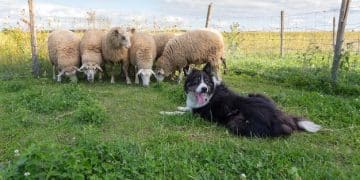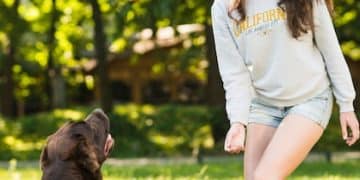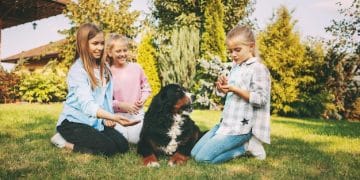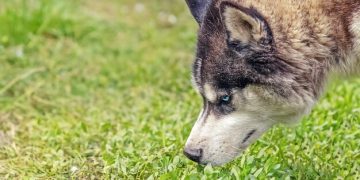Hound Dog Breeds in the US: Profiles & Scent Tracking Abilities in 2025
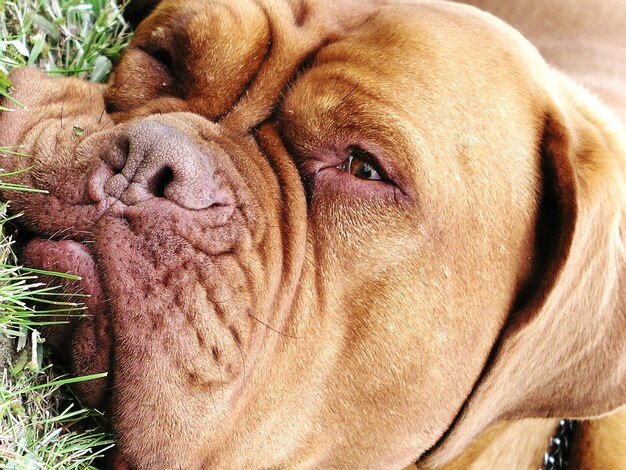
Hound dog breeds in the US in 2025 encompass a diverse group of scent and sight hounds, each with unique tracking abilities and breed profiles, playing crucial roles in hunting, law enforcement, and as beloved family pets.
Exploring the world of hound dog breeds: breed profiles and scent tracking abilities in the US in 2025 reveals a fascinating lineage of canines known for their exceptional senses and unwavering determination. From the baying of a Beagle on the trail of a rabbit to the steadfast focus of a Bloodhound, these dogs have played a vital role in American history and continue to be cherished companions and skilled working animals.
Understanding Hound Dog Breeds in the US
Hound dog breeds encompass a fascinating group of canines, each possessing unique characteristics and abilities. These dogs are categorized into two main groups: scent hounds and sight hounds. Understanding the distinctions between these groups is key to appreciating their individual strengths.
In the US, hounds have a long and storied history, initially brought over by European settlers for hunting purposes. Today, while still valued for their hunting prowess, many hound breeds have also become popular family pets.
Scent Hounds vs. Sight Hounds: What’s the Difference?
The primary difference between scent hounds and sight hounds lies in their hunting style. Scent hounds, as the name suggests, rely heavily on their sense of smell to track their prey. Sight hounds, on the other hand, depend on their keen eyesight and speed to pursue their quarry.
- Scent Hounds: These dogs have incredible olfactory abilities, allowing them to follow trails that are days old. Breeds like Bloodhounds and Beagles are prime examples.
- Sight Hounds: Built for speed and agility, sight hounds such as Greyhounds and Irish Wolfhounds use their sharp vision to spot and chase down their prey.
- Physical Differences: Scent hounds generally have longer ears and looser skin, which helps trap and direct scent particles to their noses. Sight hounds tend to be leaner and more muscular, designed for burst of speed.
Ultimately, both scent and sight hounds are highly specialized hunters, each with their own unique methods and physical adaptations. It’s these differences that make the hound group so diverse and interesting.
Popular Scent Hound Breeds and Their Profiles
Scent hound breeds are renowned for their exceptional ability to track scents, often following trails for miles with unwavering focus. Several breeds stand out for their popularity and exceptional tracking abilities in the US.
These dogs use their noses to navigate the world, making them invaluable in various applications, from hunting to search and rescue operations. Their distinct personalities and physical traits also contribute to their appeal as family pets.
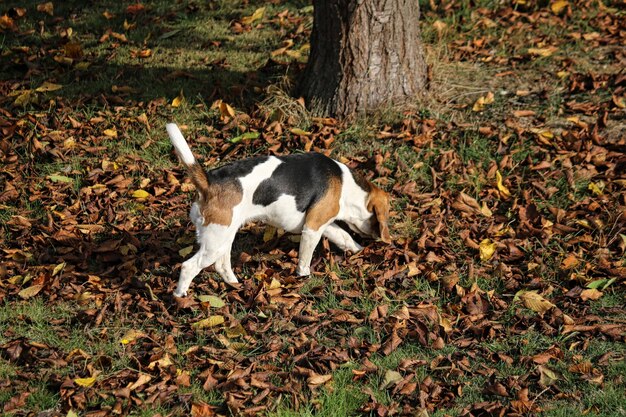
The Beagle: A Compact and Energetic Tracker
The Beagle is known for its compact size, cheerful disposition, and exceptional scent-tracking abilities. Originating in England, Beagles were bred for hunting hare and rabbits, and their keen sense of smell continues to make them valuable hunting companions today.
Beyond hunting, Beagles are also popular family pets, known for their playful and affectionate nature. However, their strong tracking instincts mean they require secure fencing and plenty of exercise to prevent them from wandering off in pursuit of an interesting scent.
The Bloodhound: Unmatched Olfactory Prowess
The Bloodhound is widely regarded as having the most acute sense of smell of all dog breeds. Their wrinkled face and long, droopy ears help trap and direct scent particles to their nose, allowing them to follow trails with incredible accuracy and persistence.
- Tracking Ability: Bloodhounds can follow scents that are days old, making them invaluable in law enforcement for tracking missing persons and fugitives.
- Physical Characteristics: Their loose skin and long ears are not just cosmetic; they play a crucial role in their scent-tracking ability.
- Temperament: Despite their serious demeanor when on the trail, Bloodhounds are generally gentle and affectionate with their families.
Overall, scent hound breeds like Beagles and Bloodhounds represent a diverse group of canines with unique skills and endearing qualities. Their abilities and loyal companionship make them valuable assets in a variety of roles.
The Future of Scent Tracking with Hound Dogs in 2025
Looking ahead to 2025, the role of scent tracking with hound dogs is poised to evolve, driven by technological advancements and changing societal needs. Their capabilities are becoming increasingly integrated with technology and utilized in diverse fields.
With continued training and adaptation, hound dogs are ready to meet the challenges of the future, solidifying their role as dependable and adaptable partners for humans.
Advancements in Training Techniques
Training techniques for scent tracking dogs are becoming more sophisticated, incorporating positive reinforcement methods and advanced scent discrimination exercises. These methods make the dogs more effective and efficient trackers.
These developments are transforming the way these dogs are trained and deployed, allowing them to meet the challenges of tomorrow with increased efficacy and competence.
The Use of Technology in Enhancing Tracking Abilities
Innovative technologies such as GPS tracking devices, scent amplification tools, and real-time data analysis are being integrated to elevate the tracking abilities of hound dogs. These technologies offer enhanced precision and reliability, enabling handlers to monitor their dogs effectively and make educated conclusions during search operations.
- GPS Tracking: Allows trainers to monitor the dog’s location and track their progress in real time.
- Scent Amplification Tools: Innovative devices that help dogs isolate and intensify specific scents.
- Data Analysis: Software analyzes environmental elements and tailors tracking methods to boost effectiveness.
This combination of conventional canine intelligence and contemporary technology is opening new possibilities for scent tracking applications.
Scent Tracking Applications Beyond Hunting
The superb scent tracking abilities of hound dogs stretch far beyond conventional hunting scenarios. They play essential roles in numerous other fields, showcasing their adaptability and value in different contexts.
In today’s world, hound dogs are useful assets in law enforcement, search and rescue missions, and even environmental protection, showcasing their diverse skill set.
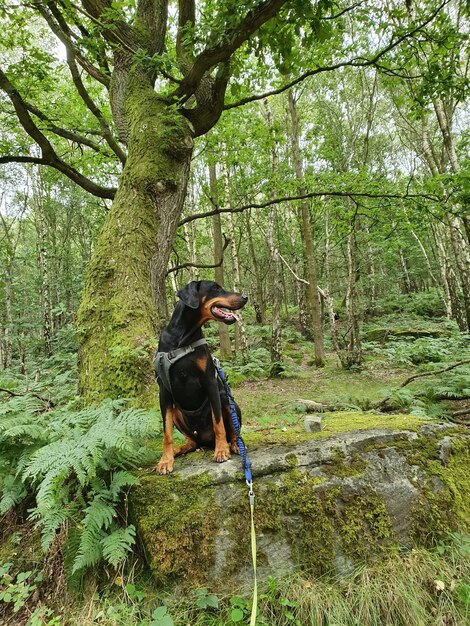
Law Enforcement and Search and Rescue Operations
Hound dogs are often used in law enforcement to track down suspects, locate missing individuals, and discover proof at crime scenes. Their olfactory prowess permits them to follow trails even under tough conditions, making them invaluable to authorities.
In search and rescue operations, hound dogs are employed to find lost or injured individuals in remote or disaster-stricken regions. Their capacity to cover huge areas swiftly and effectively can substantially improve the possibilities of a successful rescue.
Conservation Efforts and Wildlife Management
Hound dogs also play a critical part in conservation initiatives and wildlife control. They can be utilized to track endangered species, monitor wildlife populations, and sense invasive species in fragile ecosystems.
- Tracking Endangered Species: Dogs can follow the faint trails of endangered animals, aiding specialists in studying their actions and implementing protection actions.
- Monitoring Wildlife: By pinpointing animal tracks and scat, dogs assist researchers in keeping track of animal populations and detecting shifts in distribution.
- Sensing Invasive Species: These are used to locate and remove invasive plants or animals that endanger native biodiversity.
Consequently, scent tracking abilities are important for protecting biodiversity and sustaining environments for both humans and animals.
Challenges and Considerations for Hound Dog Owners in 2025
As the popularity of hound dog breeds endures in 2025, potential owners must recognize and deal with specific challenges and factors connected with owning these canines. They possess unique requirements and traits that must be carefully considered.
Therefore, understanding these difficulties is crucial to providing a happy and fulfilling existence for your hound dog.
Addressing Health Concerns and Genetic Predispositions
Hound dogs are prone to certain health problems and genetic predispositions that prospective owners should know about. Regular veterinary care, healthy diet, and suitable exercise are vital for keeping them in top condition and avoiding prospective health problems.
- Hip Dysplasia: A common skeletal condition that can cause pain and lameness.
- Ear Infections: Their distinctive ear form causes them to be prone to ear infections, which require normal cleaning and care.
- Progressive Retinal Atrophy (PRA): This degenerative eye ailment can eventually cause blindness.
Understanding these prospective health problems helps owners take proactive actions to protect their dogs’ health and well-being.
Managing Training and Exercise Needs
Hound dogs have solid tracking instincts and excessive energy levels, making thorough training and normal exercise essential. Proper training not only ensures obedience but also gives mental stimulation and prevents behavioral concerns.
Providing plenty of physical activity, such as long walks, games of catch, or structured tracking activities, helps keep their bodies and minds interested. Therefore, finding acceptable outlets for their energy and instincts is important for preventing boredom and destructive actions.
Choosing the Right Hound Dog Breed for Your Lifestyle
Selecting the appropriate hound dog breed requires careful thought of your lifestyle, living conditions, and individual preferences. Each breed has specific demands and traits that may make them more or less suited to particular households. Assess your lifestyle, living conditions, and personal tastes when choosing a hound dog breed to ensure a good match.
Understanding these aspects will ensure that you provide a caring and satisfying atmosphere for your hound dog, resulting in a lasting and enriching connection.
| Key Point | Brief Description |
|---|---|
 Scent Hounds Scent Hounds |
Excellent sense of smell for tracking. |
 Sight Hounds Sight Hounds |
Rely on vision for hunting. |
 Beagle Beagle |
Compact, energetic, great tracker. |
 Bloodhound Bloodhound |
Unmatched scent tracking ability. |
Frequently Asked Questions
▼
▼
▼
▼
▼
Conclusion
In conclusion, exploring **hound dog breeds: breed profiles and scent tracking abilities in the US in 2025** reveals the ongoing blend of tradition and innovation that characterizes these remarkable canines. Their unique traits and capabilities ensure their lasting importance in diverse roles, from hunting and law enforcement to companionship, enriching the lives of those they serve.
